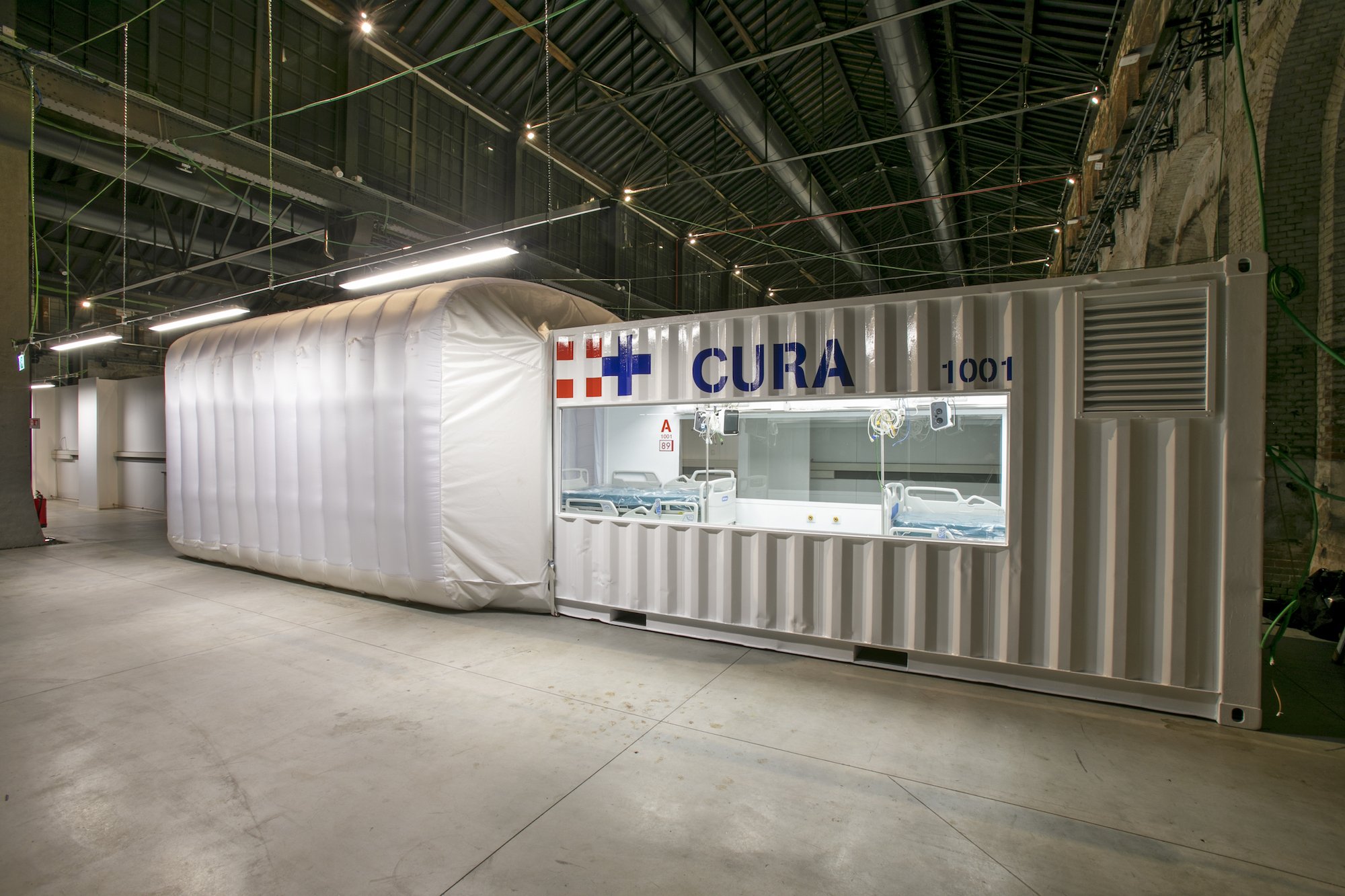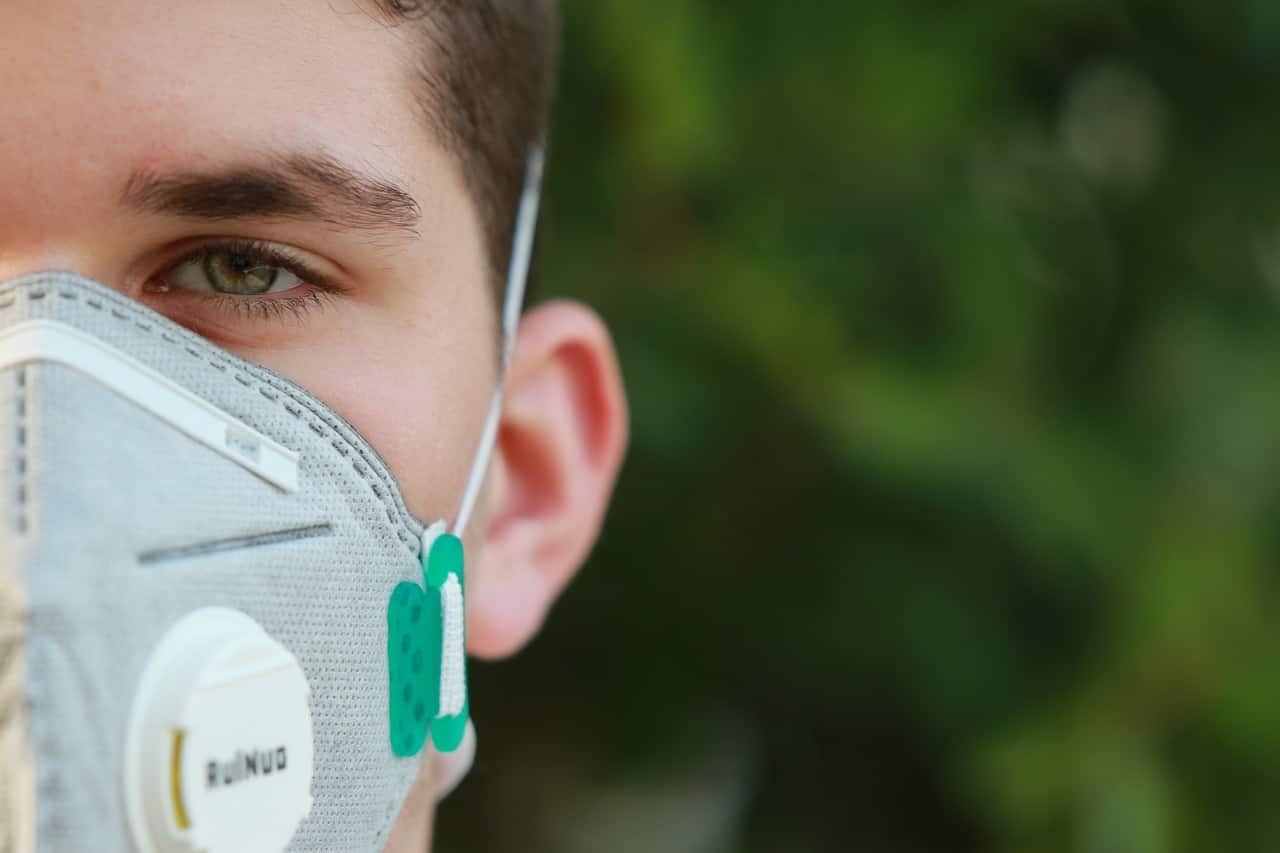
The shutdown brought entire branches of industry to a standstill. The design industry was also faced with the situation of not being systemically relevant. One of the first who knew how to contribute to containing the pandemic was the architect and engineer Carlo Ratti. When the healthcare system in his native Italy was overburdened, he transformed a shipping container into an intensive care unit for COVID-19 patients. For the period after the pandemic, he developed Pura Case, a kind of mobile wardrobe that disinfects clothes with ozone.
Carlo Ratti is the founder of the architectural office of the same name and director of the Senseable Lab at the Massachusetts Institute of Technology (MIT). For the shipping container project he worked together with the Italian architect Italo Rota. The project aims to improve the efficiency of existing design solutions for field hospitals. Common solutions are tents, which have the advantage that they can be set up quickly anywhere. However, they are not suitable for an intensive care unit because they cannot be sealed off from the outside. Ratti’s container can be erected as quickly as a tent. Its decisive advantage lies in the comprehensive biosecurity seals. This makes it just as safe as a regular isolation ward.
Intensive care unit in open-source
The intensive care unit holds two beds and can be quickly put into operation in plug-in mode. The prototype was installed in a temporary hospital in the Officine Grandi Riparazioni complex in the center of Turin, Italy. The first patient arrived on April 19. Further units are currently under construction and are being built in other parts of the world. The project is open source, meaning that plans, instructions and construction materials have been available online for everyone since the end of March. The feedback was overwhelming. So far, 2,000 people have contacted them to either contribute to the project, reproduce it or provide technical advice. So a new kind of cooperation in the design area has also been established.
The project is called Connected Units for Respiratory Ailments (CURA). It is backed by a large European consortium of research and industry partners. Support comes from the COVID-19 platform of the World Economic Forum. Regardless of how the pandemic develops, the demand for intensive care units is expected to increase in the coming months.

Disinfecting clothes
Carlo Ratti is also co-founder of the Turin-based tech start-up Scribit, founded in 2018. The start-up also used the COVID-19 crisis to think about a project with positive social impact. The idea with the disinfection of clothes was the result of an internal competition and came from Vitalie Ciornii, a technician in the team. Bacteria and viruses stay on clothes for a relatively long time. Experts assume two days. This is particularly problematic when we are moving in crowds – and cannot keep the required distance.
Handy format
The design team was led by Carlo Ratti and the development of the prototype took place in the factory of Scribit in Turin. The result is Pura Case, a kind of mobile wardrobe – a container, sort of like a cross between a garment bag and a suitcase. The volume holds a maximum of four garments on hangers. Thanks to its handy size, it can be placed in a wardrobe or in a hallway.
The disinfecting effect is based on ozone, a naturally occurring form of oxygen. The system is battery operated. According to Scribit, the disinfection process removes an estimated 80 percent of viruses, bacteria and microorganisms from the fabric of the clothing. Ozone is already used in the health and textile industry for disinfecting textiles, objects and rooms.

Digitally controlled
The Pura Case system brings the technology safely into the home. The case is made of a substance that has been treated to keep the ozone inside and is closed by an airtight zip. The disinfection process can be started and controlled via an LED control panel on the container or via a mobile app.
For the ozone to penetrate into the garment fabric, it is activated by a slight exertion of force and an imperceptible discharge. The ozone treatment runs for over an hour and not only has a disinfecting effect but also eliminates odors. As soon as the process is completed, the ozone is reduced to oxygen by a natural decomposition process so that the container can be opened safely.
Sustainable effects
“Pura Case is the answer to a new standard in health and hygiene and is designed to promote the highest standards of hygiene in clothing – the interface between people and the environment,” says Carlo Ratti. He thinks that innovation could play an important role when we return to a regular social life next year after COVID-19. It is particularly suitable for people who are exposed to numerous contacts in their work. In the home it contributes to more hygiene. At the same time it helps to avoid unnecessary washing and reduces water consumption. The material of the mobile wardrobe, which is made of recycled fiber, is also sustainable.

Crowdfunding campaign
Andrea Baldereschi, co-founder and Chief Marketing Officer (CMO) of Scribit, is proud of the project and his team, which successfully mastered the new challenges in such a short time. Now he wants to move on to the production phase. “We believe in a bottom-up approach and are planning a crowdfunding campaign in the coming weeks. This will help us get to the production phase.” Pura Case is to be offered at an affordable price so that it’s accessible to as many people as possible.
Founded in 2018, Scribit became known in 2019 with the write&erase robot. It does not require a screen, but allows writing, drawing and erasing on walls and other surfaces. According to Time magazine, it was one of the best innovations of 2019.
Also interesting:
The race for respirators; even Formula 1 is involved
Tomorrow is better: More than one and a half meters of nature




